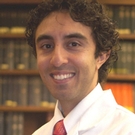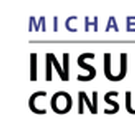A candidate, who passed the October 2018 ABO Oral Exam, gives her high-yield advice on succeeding on this test.
How I Prepared
Although we have a lot of resources for the written exam, there are few materials available currently for oral board preparation. This examination can pose a significant challenge for some candidates due to the vagueness of what’s actually being tested and how you are graded. Reading the BSCS again and using multiple resources are not high yield in my opinion. What I found to be useful was practicing a prepared speech for each of the major diseases in each section in front of a mirror or with a study partner for at least a few weeks before the actual exam. This helps in giving a very smooth oral presentation (should you get the same diagnosis) on the actual exam. The cases are the most common ones you see daily in clinical practice--a topic list can be found from reading an oral review book or taking a review course.
Exam day
The Oral Exam is given twice a year. Examinations are given in 6 different hotel rooms for each candidate covering 6 subject areas. Each room will have 2 subject areas being tested. For example, Neuro will be combined with Posterior Segment and you will go to 2 rooms where the cases are combination of Neuro/Posterior Segment. There is a moderator to help with the time flow of the exam. Usually there is one room that has snacks such as pretzels or a snack bar, but it might be much farther away from your actual exam room location. So having a good meal before the exam will help as you get only a 5 minute break between each sections. You are also not allowed to bring anything with you including a cell phone. Due to this, it might be easier to stay in the same hotel the night before the exam.
The exam is now provided in an electronic tablet. You will have minimal interaction with the tablet other than signing your name and scrolling down a photo. Most of the time, the examiner handles the flow and you are advised to follow their instructions. Most of the cases were straightforward. However, there are some challenging cases where either the picture is blurry or the diagnosis is not very clear. Having a format such as describing the clinical picture first, followed by asking pertinent history, differential diagnosis and lab/tests will greatly help in narrowing down the diagnosis. The examiner might then provide you with any additional data based on the test you order such as MRI, visual field, etc. This will help you in getting to the correct diagnosis and more importantly having a treatment plan and follow-up which is often missed by many.
For example, if you are presented with an eyelid lesion that looks like a chalazion, your presentation (constrained to 2.5 minutes) for that case should start with a description of the picture (e.g. raised, circular, erythematous lesion involving the margin, upper etc); and quickly move on to asking pertinent history; followed by DDx (3-4 max); and then explaining why you think it is "x"; treatment plan for this disease; and importantly follow-up. The differential should always include the deadly disease that you cannot miss (i.e. something than can kill the patient). In the aforementioned example, you would want to include sebaceous cell carcinoma in the DDx of a chalazion.
Common Pitfalls
Candidates fail if they spend too much time in one case and are unable to finish at least 6 or 7 cases in that room. The examiner may or may not move you to the next one. So if you are completely stuck in a case where you have no clue what's going on and you have already wasted 3 minutes, it's ok to pass. However, you will not able to go back to the case and ideally you should do this as a last resort. There are certain number of cases you have to get through in each room to get a pass and each case should be done in approximately 2.5 minutes. This is where preparation helps.
Optics/anterior segment does include refractive surgery questions as well as basic optics such as refraction. The subject areas and an outline can be found on the ABOP website. It is also important to dress conservatively and professionally.
Having a study plan where you practice the case presentation repeatedly before the actual exam, sticking to the time limit for each case (so you can get through as many cases as possible), dressing professionally -- all of this will help in passing the exam after your first try.
Good luck to everyone taking the oral boards!
Want to get more from OphthoQuestions?









Please login to comment.